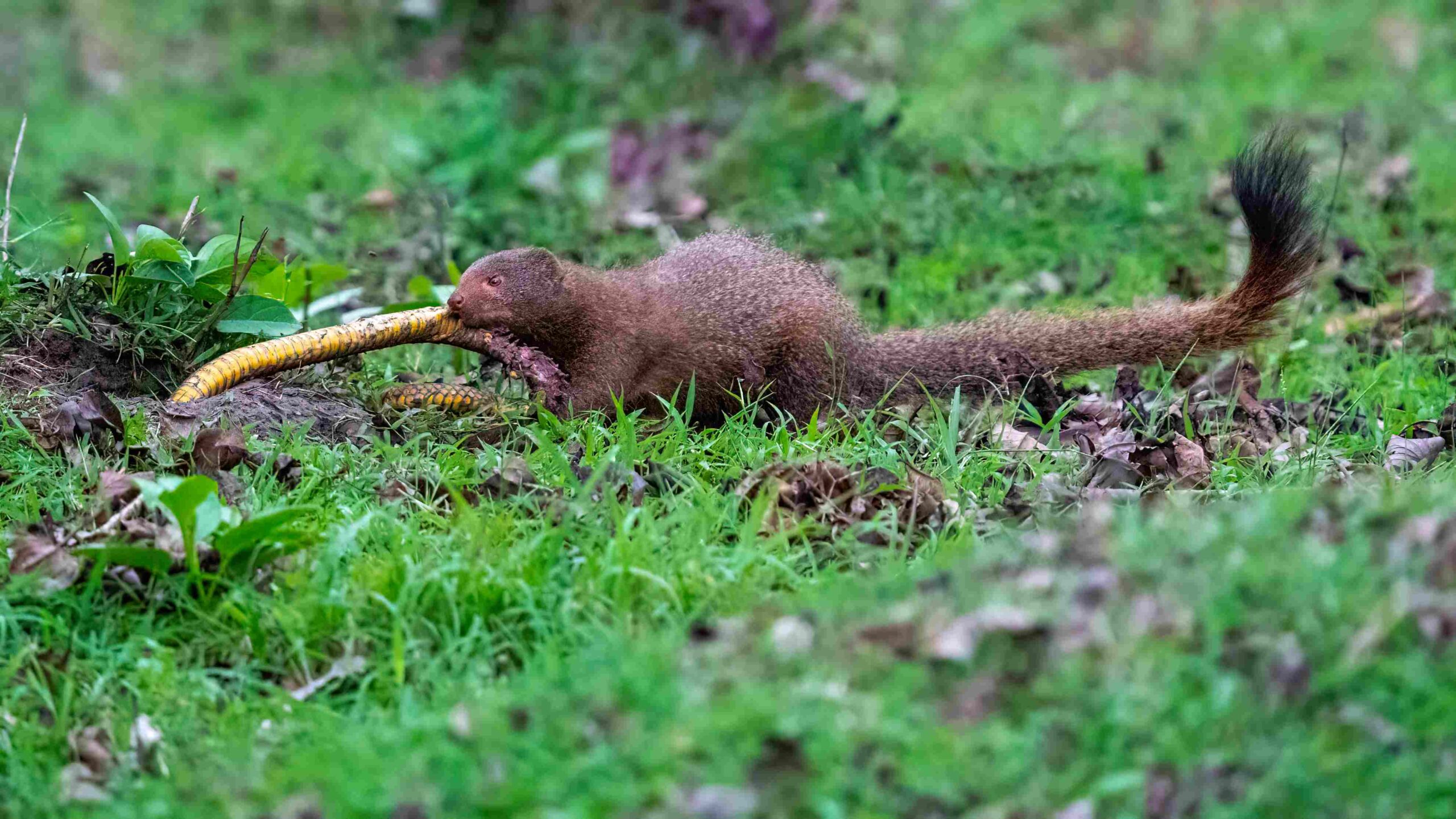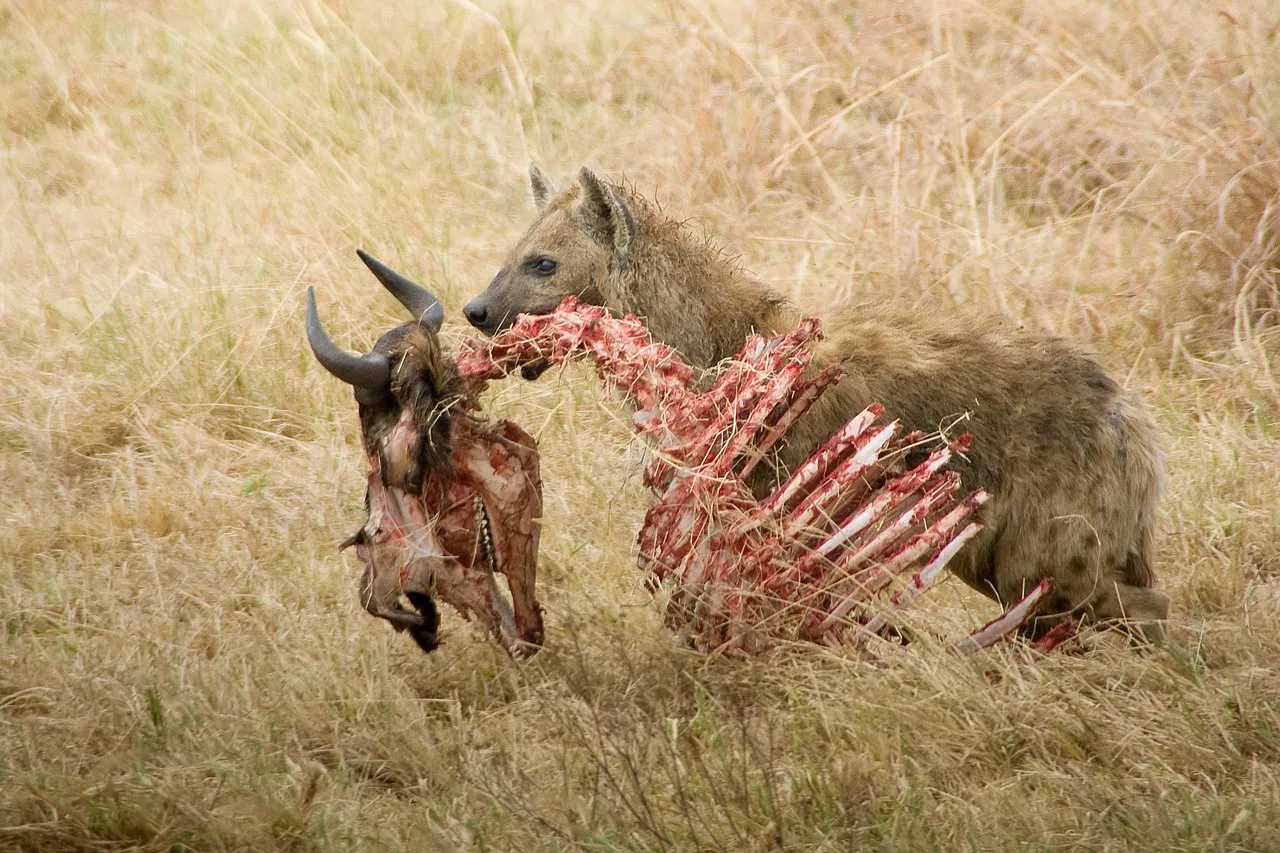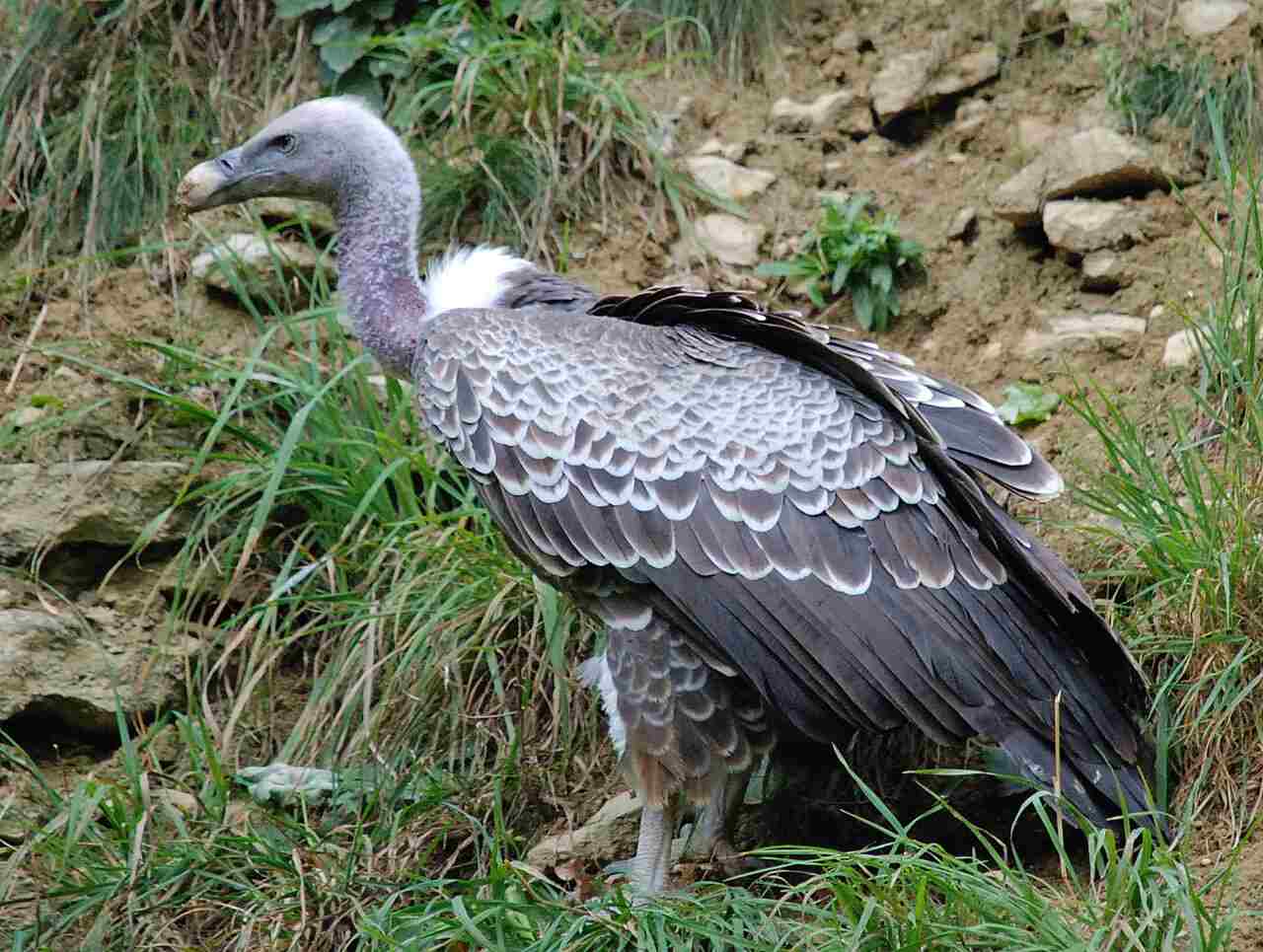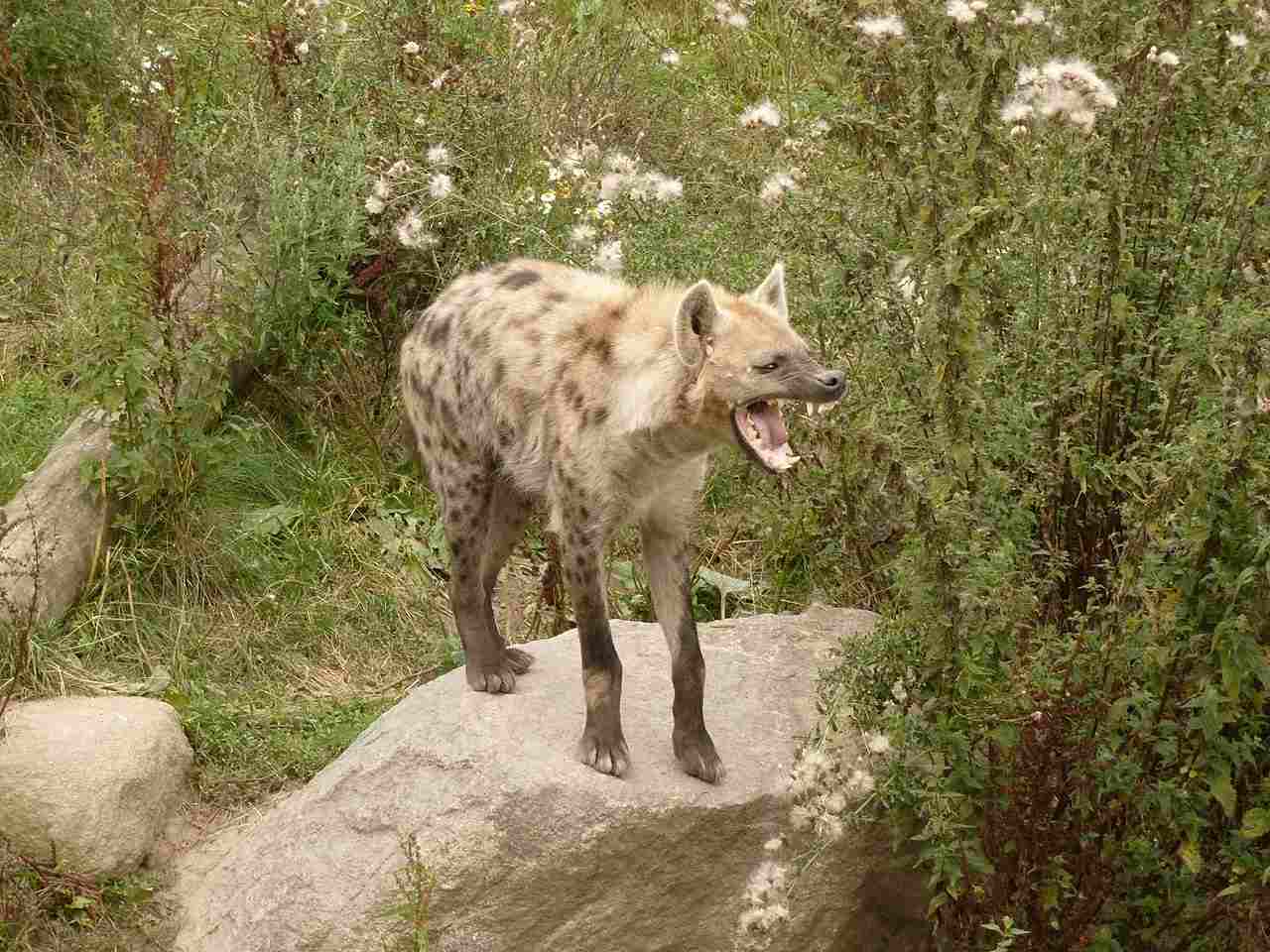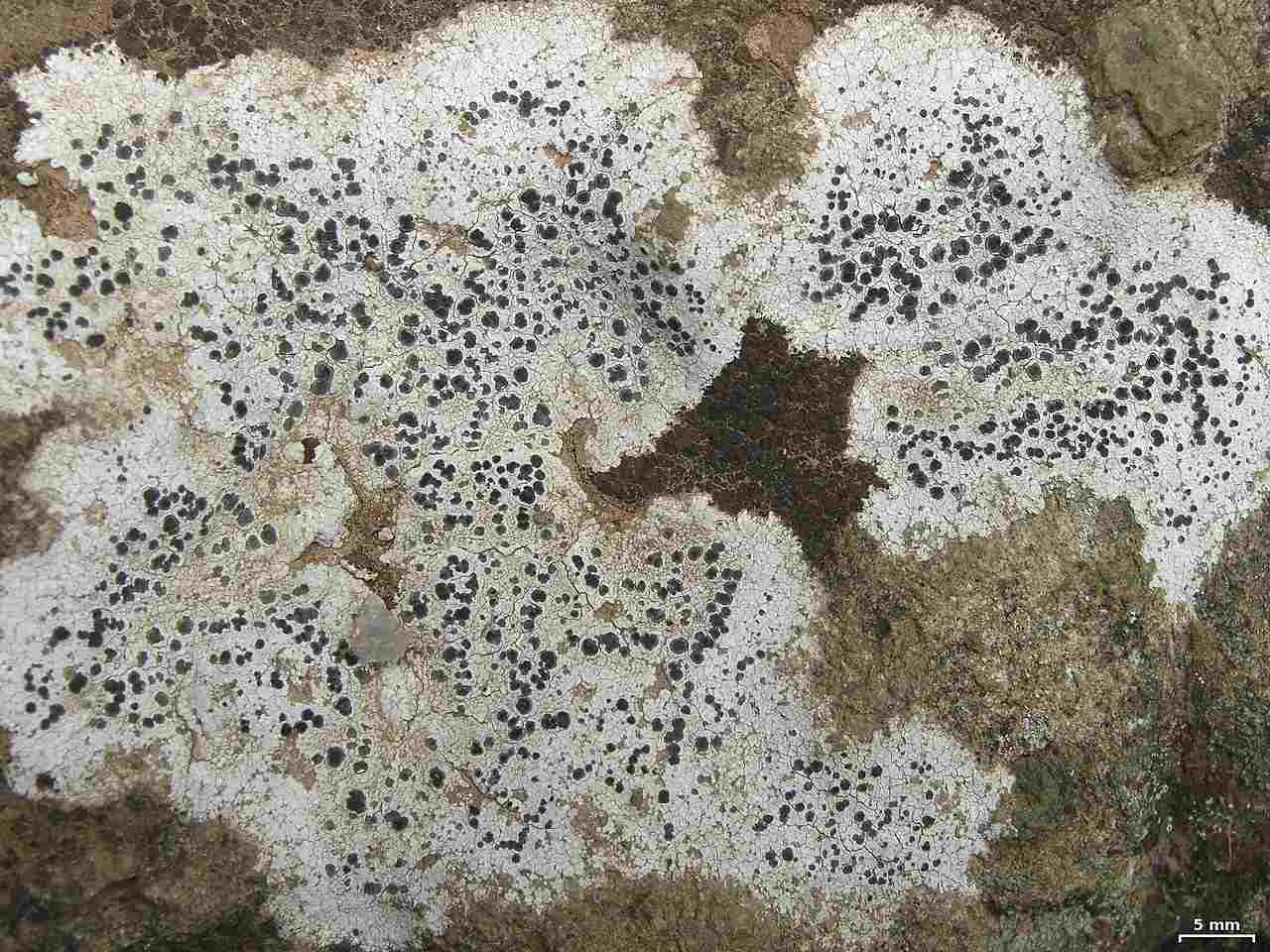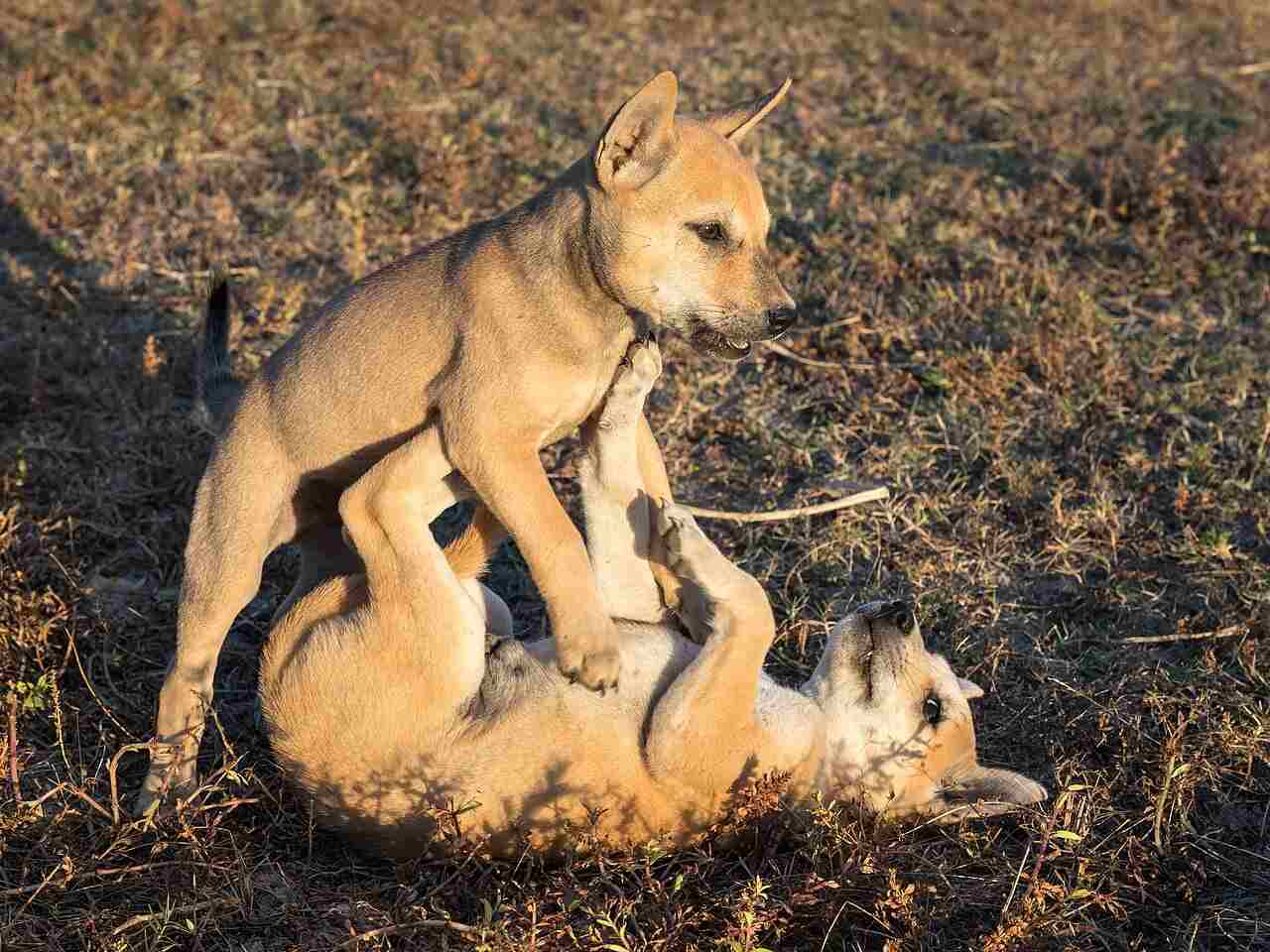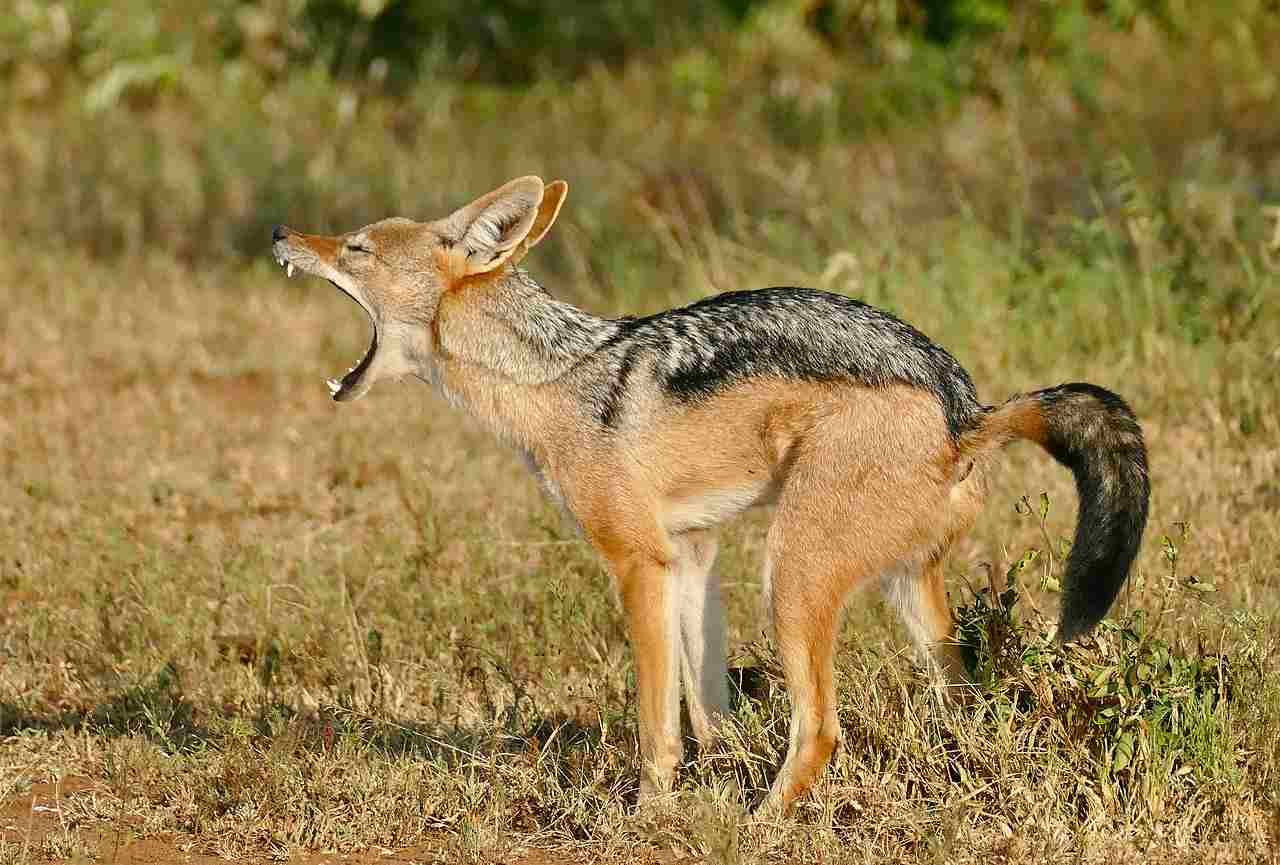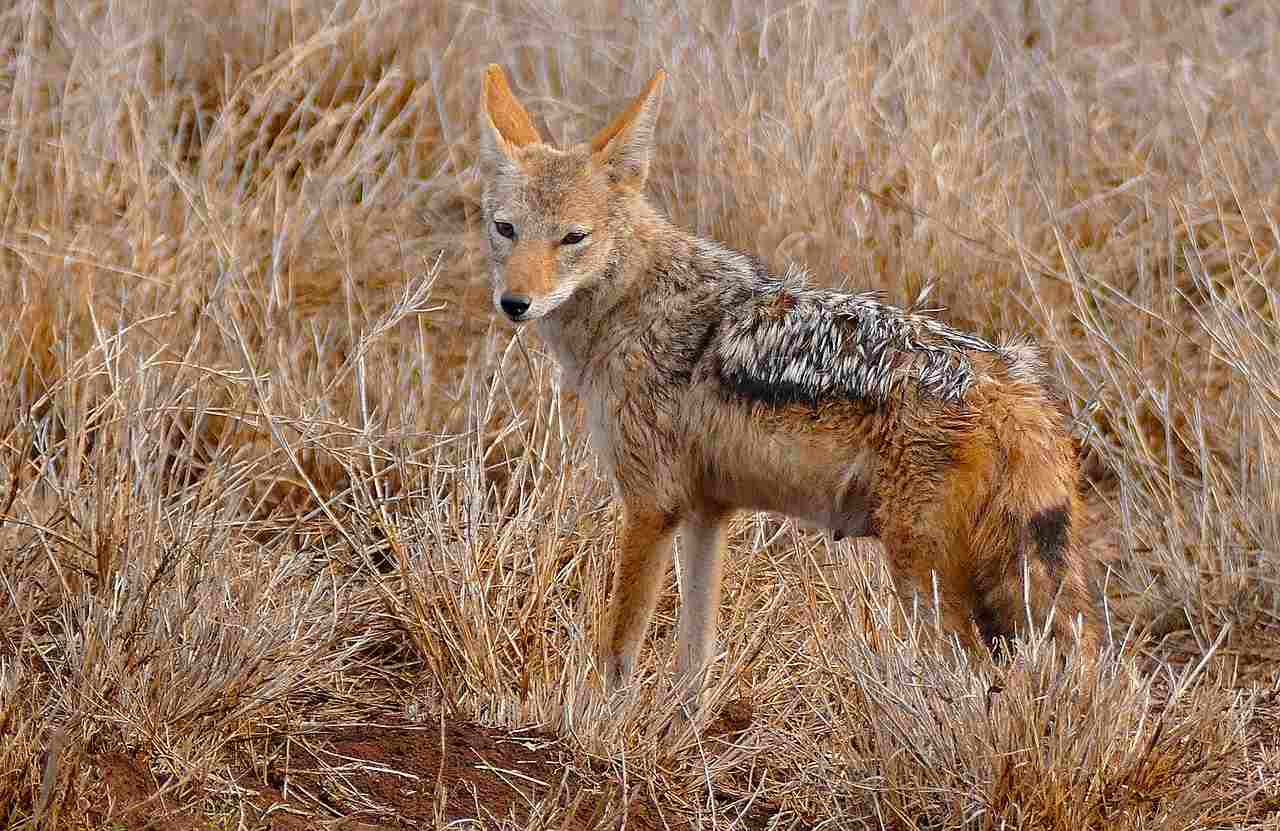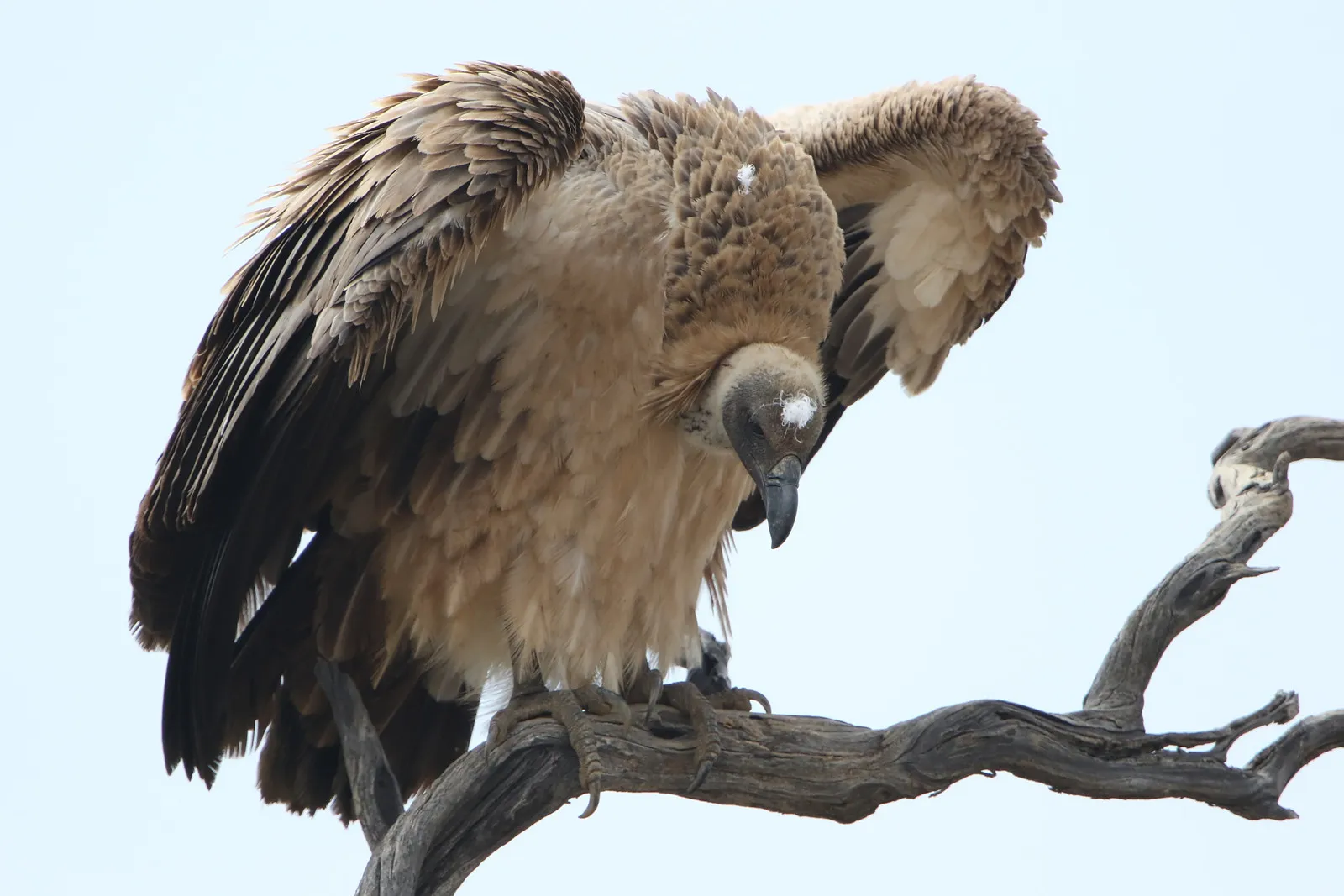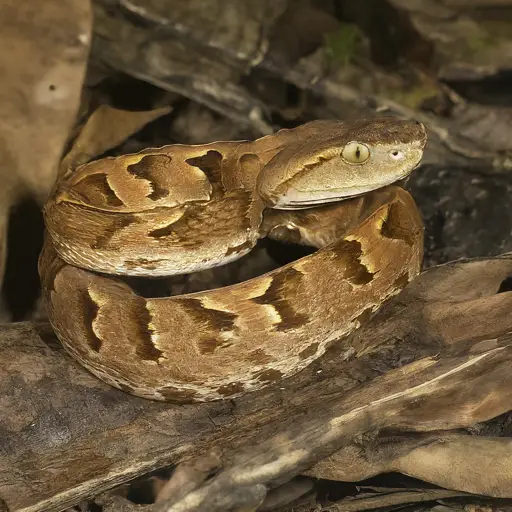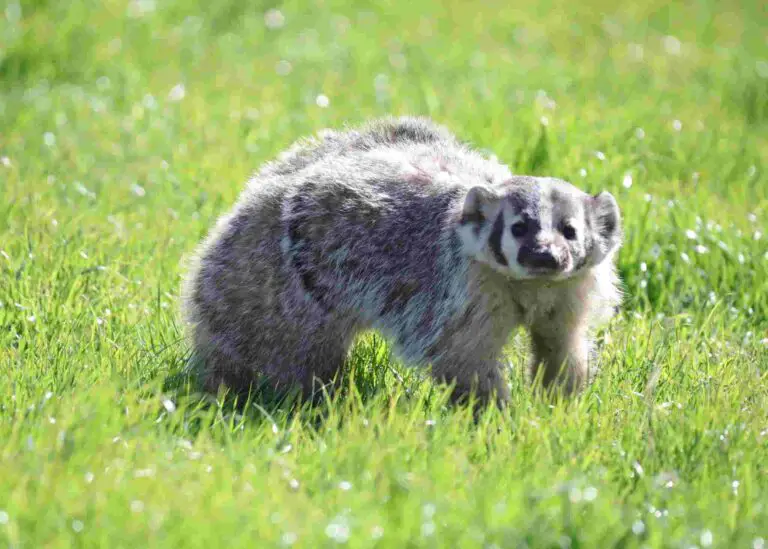9+ Scavengers In The Savanna Ecosystem Discussed
Examples of scavengers in the savanna ecosystem are the Marabou Stork, White-Backed Vulture, Hyena, and Jackal. These scavengers play vital roles in waste disposal, disease prevention, and nutrient recycling by efficiently consuming carrion left behind by other predators. However, they face threats such as habitat loss, poisoning, and human persecution, highlighting the need for conservation efforts to protect these crucial components of the savanna ecosystem.
1. Marabou Stork
The Marabou Stork, with its gangly figure and bald, scabbed head, is an iconic figure in the scavenger community of the savanna. Often seen loitering around kill sites, these birds are nature’s cleanup crew, efficiently disposing of carcasses left behind by larger predators. Despite their unappealing appearance, Marabou Storks play a crucial role in maintaining the ecosystem’s balance.
Their scavenging habits have led to their reputation as opportunistic feeders, feasting on a variety of carrion ranging from small rodents to large ungulates. With their long, sharp beaks and powerful digestive systems, they can consume even the toughest of meat, making them highly efficient scavengers.
Apart from their scavenging prowess, Marabou Storks exhibit intriguing social behavior, often congregating in large groups around abundant food sources. Their scavenging activities are not limited to the savanna alone; they can also be found in urban areas, scavenging from garbage dumps and landfills, showcasing their adaptability to various environments.
Despite their adaptability and essential role in the ecosystem, Marabou Storks face threats such as habitat loss, pollution, and persecution from humans. Conservation efforts are crucial to ensure the survival of these unique scavengers, as their presence not only aids in waste disposal but also contributes to the overall health of the savanna ecosystem.
2. White-Backed Vulture
In the vast expanse of the savanna, the White-Backed Vulture reigns as one of the most efficient and specialized scavengers. With its keen eyesight and powerful beak, this majestic bird plays a vital role in the ecosystem’s waste disposal system. Often soaring high above the plains, White-Backed Vultures use their acute vision to spot carcasses from great distances.
Once a carcass is located, White-Backed Vultures descend upon it in a flurry of feathers, using their strong beaks to tear through tough hides and sinew. Their scavenging behavior is not just a means of sustenance but also serves as a crucial ecological service, preventing the spread of disease by swiftly consuming carrion before it can rot and contaminate the environment.
Despite their essential role, White-Backed Vultures face numerous threats, including habitat loss, poisoning from ingesting contaminated carcasses, and collisions with power lines. Conservation efforts are underway to protect these magnificent birds and ensure their continued presence in the savanna ecosystem.
3. Lappet Vulture
The Lappet Vulture, with its distinctive folds of skin hanging from its neck, is a formidable scavenger of the savanna. Often found in the company of other vulture species, Lappet Vultures use their powerful beaks and robust digestive systems to break down carrion into manageable pieces.
Their scavenging behavior is not just limited to large carcasses but also extends to smaller prey and scraps left behind by other predators. This adaptability allows Lappet Vultures to thrive in various habitats across the savanna, from open grasslands to dense woodlands.
Despite their resilience, Lappet Vultures face threats such as habitat loss, poisoning from ingesting contaminated carcasses, and collisions with man-made structures. Conservation efforts are crucial to safeguard the future of these important scavengers and maintain the ecological balance of the savanna.
4. Hyena
The Hyena, with its powerful jaws and keen sense of smell, is a formidable scavenger and predator in the savanna. Often portrayed as cunning and opportunistic, Hyenas play a crucial role in the ecosystem’s scavenging hierarchy, utilizing their strong teeth and digestive systems to consume carrion and even bone marrow.
Unlike other scavengers, Hyenas are also skilled hunters, capable of taking down prey much larger than themselves. This dual role as scavenger and predator highlights their adaptability and resourcefulness in the harsh savanna environment.
Despite their importance in the ecosystem, Hyenas face threats such as habitat loss, persecution from humans, and competition with other predators. Conservation efforts are vital to ensure the survival of these fascinating creatures and maintain the ecological balance of the savanna ecosystem.
5. Jackal
The Jackal, with its sleek build and keen senses, is a proficient scavenger and predator in the savanna. Often spotted skulking around kill sites, Jackals play a vital role in the ecosystem’s scavenging community, efficiently disposing of carrion left behind by larger predators.
Their scavenging behavior is not just limited to carcasses but also extends to small prey and scraps left behind by other predators. Jackals are known for their intelligence and adaptability, utilizing various hunting and scavenging techniques to secure food in the often harsh savanna environment.
Despite their resourcefulness, Jackals face threats such as habitat loss, persecution from humans, and competition with other scavengers and predators. Conservation efforts are essential to protect these adaptable creatures and maintain the ecological balance of the savanna ecosystem.
6. Lion
The Lion, often hailed as the king of the savanna, is a formidable predator and scavenger. While primarily known for their hunting prowess, Lions also play a crucial role in the ecosystem’s scavenging hierarchy, often dominating kill sites and driving away smaller scavengers.
Their powerful jaws and muscular build allow Lions to consume large carcasses efficiently, leaving little behind for other scavengers to feed on. However, Lions are not above scavenging themselves, often stealing kills from other predators or scavenging from carcasses left behind by their own hunting endeavors.
Despite their status as apex predators, Lions face threats such as habitat loss, human-wildlife conflict, and depletion of prey species. Conservation efforts are vital to ensure the survival of these iconic animals and maintain the ecological balance of the savanna ecosystem.
7. Beetle
In the intricate web of scavengers in the savanna, Beetles play a vital role in the decomposition process. While not as charismatic as larger scavengers like vultures or hyenas, Beetles are essential in breaking down organic matter and recycling nutrients back into the ecosystem.
From dung beetles rolling away feces to burying beetles excavating carcasses underground, these tiny creatures contribute to the efficient decomposition of organic material in the savanna. Their activities not only help clean up the environment but also enrich the soil, promoting plant growth and biodiversity.
Despite their small size, Beetles face threats such as habitat loss, pesticide use, and climate change. Conservation efforts are crucial to protect these often-overlooked scavengers and maintain the health of the savanna ecosystem.
8. Crow
In the bustling savanna landscape, Crows are often overlooked scavengers that play a crucial role in the ecosystem. With their intelligent minds and adaptable nature, Crows are skilled opportunists, scavenging for a variety of food sources, including carrion left behind by larger predators.
Their scavenging behavior is not just limited to carcasses but also extends to a wide range of food items, including insects, small mammals, and even human food scraps. Crows are known for their problem-solving abilities, often using tools and creative tactics to access hard-to-reach food sources.
Despite their resourcefulness, Crows face threats such as habitat loss, pollution, and persecution from humans. Conservation efforts are essential to protect these intelligent birds and maintain the ecological balance of the savanna ecosystem.
9. Hooded Vulture
The Hooded Vulture, with its distinctive black hood and piercing eyes, is a specialized scavenger of the savanna. Often seen circling high above the plains, Hooded Vultures rely on their keen eyesight to spot carcasses from great distances, guiding them to potential food sources.
Their scavenging behavior is not just limited to large carcasses but also extends to smaller prey and scraps left behind by other predators. Hooded Vultures play a crucial role in the ecosystem’s waste disposal system, efficiently consuming carrion before it can rot and contaminate the environment.
Despite their important ecological role, Hooded Vultures face threats such as habitat loss, poisoning from ingesting contaminated carcasses, and collisions with man-made structures. Conservation efforts are vital to protect these magnificent birds and ensure their continued presence in the savanna ecosystem.
10. Banded Mongoose
In the intricate web of scavengers in the savanna, the Banded Mongoose is a fascinating and efficient member. Living in tight-knit social groups called troops, Banded Mongooses are skilled hunters and scavengers, often foraging together for food sources across the savanna landscape.
Their scavenging behavior is not just limited to carrion but also extends to a variety of food items, including insects, small mammals, and even fruits. Banded Mongooses use their sharp claws and powerful jaws to tear into carcasses, efficiently consuming the remains left behind by larger predators.
Despite their small size, Banded Mongooses play a crucial role in the ecosystem’s scavenging community, helping to clean up the environment and recycle nutrients back into the ecosystem. Conservation efforts are essential to protect these fascinating creatures and maintain the ecological balance of the savanna.
11. Ant
In the bustling world of scavengers in the savanna, Ants are often overlooked but incredibly important contributors to the ecosystem. With their organized colonies and tireless work ethic, Ants play a vital role in the decomposition process, breaking down organic matter and recycling nutrients back into the soil.
Their scavenging behavior is not just limited to carcasses but also extends to a wide range of organic material, including plant matter, insects, and small vertebrates. Ants work together in coordinated efforts, carrying food items back to their nests to feed their colonies and fungi farms.
Despite their small size, Ants are incredibly efficient scavengers, playing a crucial role in maintaining the health of the savanna ecosystem. Conservation efforts are essential to protect these often-overlooked scavengers and maintain the ecological balance of the savanna.
*Summary
-
Marabou Stork:
-
Iconic scavenger with efficient carrion disposal abilities.
-
Utilizes long beak and powerful digestive system.
-
Crucial for ecosystem balance but faces threats like habitat loss.
-
-
White-Backed Vulture:
-
Efficient scavenger with keen eyesight.
-
Plays vital role in waste disposal and disease prevention.
-
Threatened by habitat loss and poisoning.
-
-
Lappet Vulture:
-
Recognizable by distinctive neck folds.
-
Utilizes powerful beak for carrion consumption.
-
Adaptable scavenger facing threats like habitat loss.
-
-
Hyena:
-
Formidable scavenger and predator.
-
Known for powerful jaws and hunting abilities.
-
Faces threats like habitat loss and human conflict.
-
-
Jackal:
-
Sleek scavenger with keen senses.
-
Adaptable opportunist feeding on carrion and small prey.
-
Threatened by habitat loss and human persecution.
-
-
Lion:
-
Apex predator and scavenger known for dominance.
-
Plays crucial role in scavenging hierarchy.
-
Faces threats like habitat loss and prey depletion.
-
-
Beetle:
-
Essential in decomposition process.
-
Contributes to nutrient recycling and soil enrichment.
-
Faces threats like habitat loss and pesticide use.
-
-
Crow:
-
Intelligent scavenger with adaptable nature.
-
Utilizes problem-solving skills for scavenging.
-
Threatened by habitat loss and pollution.
-
-
Hooded Vulture:
-
Specialized scavenger with keen eyesight.
-
Plays crucial role in waste disposal.
-
Faces threats like habitat loss and poisoning.
-
-
Banded Mongoose:
-
Skilled scavenger and hunter in social groups.
-
Contributes to scavenging and waste disposal.
-
Faces threats like habitat loss and human disturbance.
-
-
Ant:
-
Often-overlooked scavenger crucial for decomposition.
-
Organized colonies contribute to nutrient recycling.
-
Faces threats like habitat loss and climate change.
-
| Scavenger | Summary |
| Marabou Stork |
Iconic scavenger with efficient carrion disposal abilities. Utilizes long beak and powerful digestive system. Crucial for ecosystem balance.
|
| White-Backed Vulture |
Efficient scavenger with keen eyesight. Plays vital role in waste disposal and disease prevention. Threatened by habitat loss and poisoning.
|
| Lappet Vulture |
Recognizable by distinctive neck folds. Utilizes powerful beak for carrion consumption. Adaptable scavenger facing threats like habitat loss.
|
| Hyena |
Formidable scavenger and predator. Known for powerful jaws and hunting abilities. Faces threats like habitat loss and human conflict.
|
| Jackal |
Sleek scavenger with keen senses. Adaptable opportunist feeding on carrion and small prey. Threatened by habitat loss and human persecution.
|
| Lion |
Apex predator and scavenger known for dominance. Plays crucial role in scavenging hierarchy. Faces threats like habitat loss and prey depletion.
|
| Beetle |
Essential in decomposition process. Contributes to nutrient recycling and soil enrichment. Faces threats like habitat loss and pesticide use.
|
| Crow |
Intelligent scavenger with adaptable nature. Utilizes problem-solving skills for scavenging. Threatened by habitat loss and pollution.
|
| Hooded Vulture |
Specialized scavenger with keen eyesight. Plays crucial role in waste disposal. Faces threats like habitat loss and poisoning.
|
| Banded Mongoose |
Skilled scavenger and hunter in social groups. Contributes to scavenging and waste disposal. Faces threats like habitat loss and human disturbance.
|
| Ant |
Often-overlooked scavenger crucial for decomposition. Organized colonies contribute to nutrient recycling. Faces threats like habitat loss and climate change.
|
Related FAQs
Q: Why are scavengers important in the savanna ecosystem? A: Scavengers play a vital role in the savanna ecosystem by efficiently recycling nutrients, preventing the spread of disease by consuming carrion, and helping to maintain the balance of the food chain.
Q: How do scavengers find their food in the savanna? A: Scavengers in the savanna utilize various methods to find food, including keen senses like sight and smell, following vultures or other scavengers to carcasses, and even monitoring the behavior of other predators to scavenge from their kills.
Q: What threats do scavengers face in the savanna? A: Scavengers in the savanna face threats such as habitat loss due to human activities like deforestation and urbanization, poisoning from ingesting contaminated carcasses or pesticides, persecution from humans, and competition with other scavengers and predators.
Q: How do scavengers contribute to the ecosystem beyond carrion disposal? A: Scavengers in the savanna contribute to the ecosystem by recycling nutrients back into the soil through decomposition, controlling populations of disease-carrying organisms by consuming carrion, and providing food for other organisms through their own predation or scavenging activities.
Q: What can be done to protect scavengers in the savanna? A: Conservation efforts to protect scavengers in the savanna include preserving their natural habitats, mitigating human-wildlife conflicts, implementing measures to reduce poisoning from pesticides or contaminated carcasses, and raising awareness about the importance of scavengers in the ecosystem.
